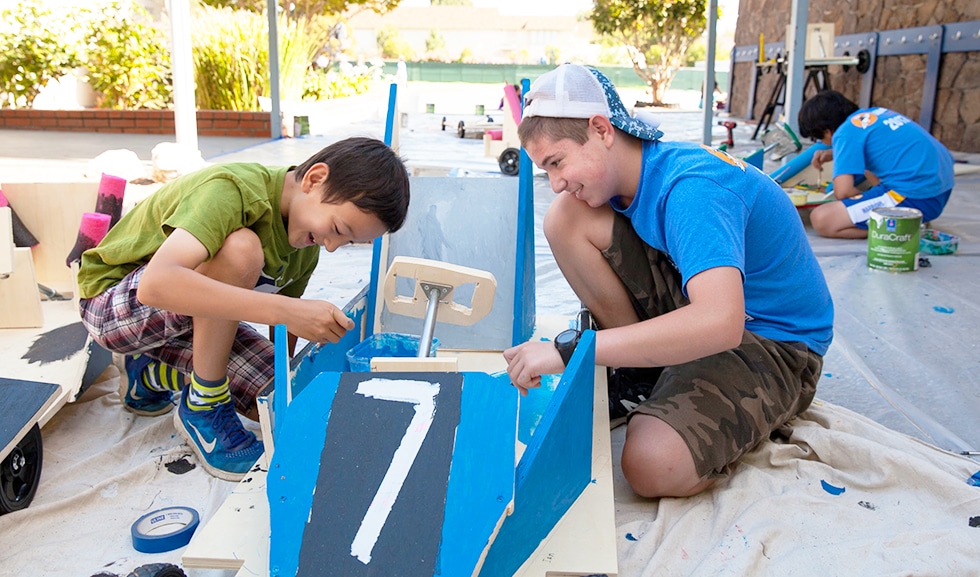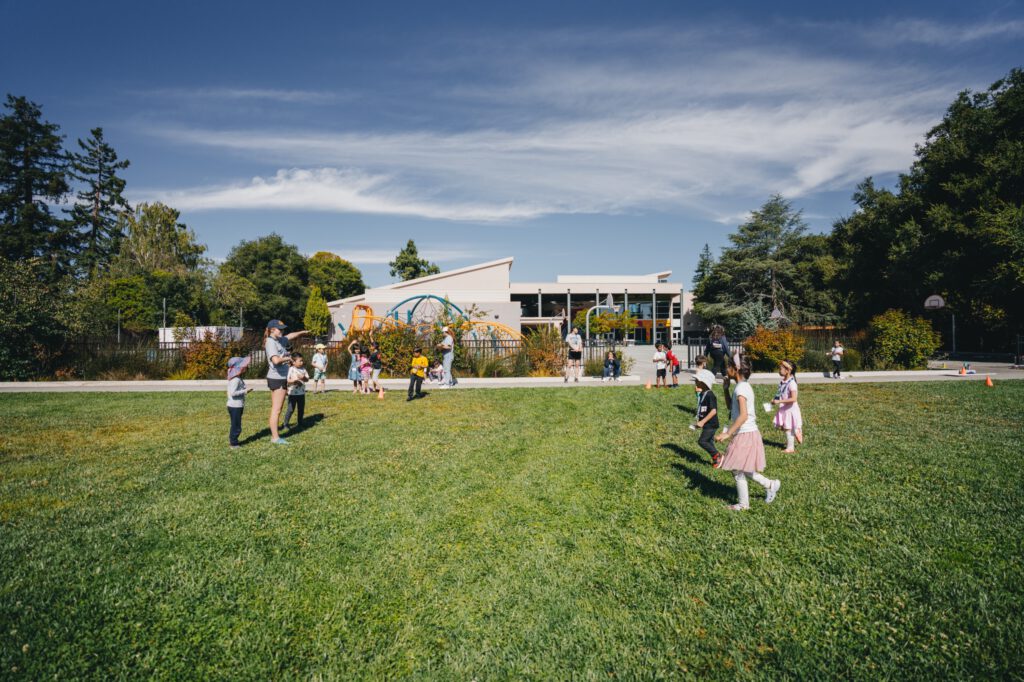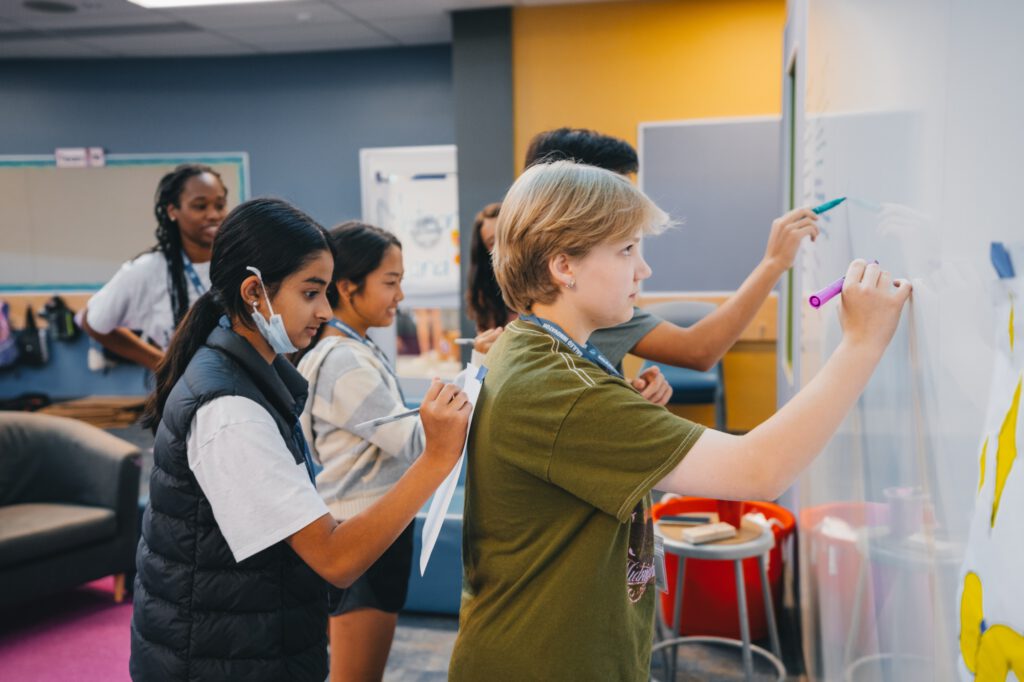Curiosity is a powerful force. In the evolution of human beings, the desire and drive to explore new places likely motivated the migration of our earliest ancestors to every corner of the Earth. That same curiosity powered the questions that caused humans to take risks, conduct research and invent new things. It is at the root of all exploration, discovery and innovation. History has shown that when human curiosity is fed and nurtured, incredible things are possible.
As infants grow and spend more waking time, they are motivated to explore the world around them, first with their fingers and their mouths. Later, as strength and mobility increase, curiosity becomes the guiding force behind crawling, standing, reaching and walking. When young inquisitiveness is nurtured and rewarded, it will persist well beyond childhood into the adult years. Encouraging kids’ curiosity at home is essential, of course, but finding an elementary school summer program that fuels curiosity can be especially empowering.
The Wonder Years
To support kids’ curiosity and nourish their innovative spirits, they must be placed in an environment where opportunities for new experiences are abundant. Research suggests that learning in an environment where curiosity is allowed to flourish is more effective and rewarding. One scientist leading the exploration of the science behind curiosity is Dr. Charan Ranganath, who explains, “Once you light that fire of curiosity, you put the brain in a state that’s more conducive to learning. Once you get this ramp-up of dopamine, the brain becomes more like a sponge that’s ready to soak up whatever is happening.”
So what is the best environment to encourage and expand the innate curiosity that’s present when kids come into the world? A household that welcomes inquisitiveness is a great start. When supported by curious adults, kids have an easier time channeling their curiosity into inquiry. Here are some ways parents can help to nurture curiosity:
- Provide a variety of novel experiences, indoors and out, including museums, zoos, libraries and parks.
- Welcome questions and don’t be afraid to admit you don’t know the answer; you can investigate together!
- Teach kids to be observant and inquisitive—point out interesting phenomena and pose questions of your own.
- Start with the five senses; even if they know nothing about an object, kids can describe how it looks, feels, sounds, smells or tastes.
- Connect cause and effect: ask them why or what they think happened before.
Celebrate Curiosity With Project-Based Learning
Curiosity leads to active, engaged learning that facilitates deeper understanding and ownership. When encouraged to exercise their curiosity, kids can learn to approach questions the way a scientist or engineer might. The best summer learning programs for elementary students promote this type of inquiry and teach kids a systematic approach that stimulates innovative thinking. These active learning experiences help kids learn content and gain skills, including critical thinking, communication and the ability to collaborate with a team.
Summer learning programs are the ideal venue for a project-based approach. They give kids the opportunity to follow their interests and explore them in depth. First, kids discuss their goals and clarify their questions. Next, they engage in thought-provoking learning experiences that allow them to get firsthand information to answer their questions. Finally, they communicate what they have learned and reflect back on it. When kids learn a system for addressing their questions, they own it and can apply it in a variety of future contexts.
 Some projects seek to solve a problem or improve a product, while others may be designed to educate or call people to action. Project-based learning starts with a question that drives the inquiry; this is where that powerful curiosity comes in. “How does the human body work?” is too broad to support a manageable project, but “How can kids help stop the spread of the flu?” is timely, open-ended and focused. There is room to gather and analyze information before employing creativity to propose an answer or solution. Working with a partner or group enables discussion, keeping kids motivated and providing feedback. Adults provide guidance, point them to resources and keep the process moving. The solution may take many forms: poster, brochure, device invention, video, skit or demonstration, to name just a few. Giving kids “voice and choice” in developing a question and selecting their final project makes learning fun and individualized, allowing them to view themselves as innovators.
Some projects seek to solve a problem or improve a product, while others may be designed to educate or call people to action. Project-based learning starts with a question that drives the inquiry; this is where that powerful curiosity comes in. “How does the human body work?” is too broad to support a manageable project, but “How can kids help stop the spread of the flu?” is timely, open-ended and focused. There is room to gather and analyze information before employing creativity to propose an answer or solution. Working with a partner or group enables discussion, keeping kids motivated and providing feedback. Adults provide guidance, point them to resources and keep the process moving. The solution may take many forms: poster, brochure, device invention, video, skit or demonstration, to name just a few. Giving kids “voice and choice” in developing a question and selecting their final project makes learning fun and individualized, allowing them to view themselves as innovators.
Guided Inquiry for Curious Kids
The summer learning programs for elementary students at Camp Galileo are made for curious kids in pre-K through 5th grade. Staffed by enthusiastic lifelong learners, Camp G supports and encourages kids to move through life with eyes wide open. Guided by the Galileo Innovation Approach® (GIA), campers immerse themselves into one of four fascinating themes and follow their questions through a week-long inquiry, supplemented all along with projects and creative activity.
Whether they’re curious about the intricacies of the human body, the mystery of interplanetary space travel or the novelty of high-tech motor vehicles, kids will experience age-appropriate activities that affirm and extend their interests. All the while, the GIA will guide their discovery and help them take action as they learn. Perhaps most importantly, immersion in the innovative mindset will promote resilience and perpetuate the curiosity that will help kids succeed in school and in their future explorations.
For quality summer programs in the San Francisco Bay Area, Southern California, and Chicagoland areas, check out Camp Galileo. Sign up for our newsletter to keep up-to-date on our camp happenings and innovation resources.



